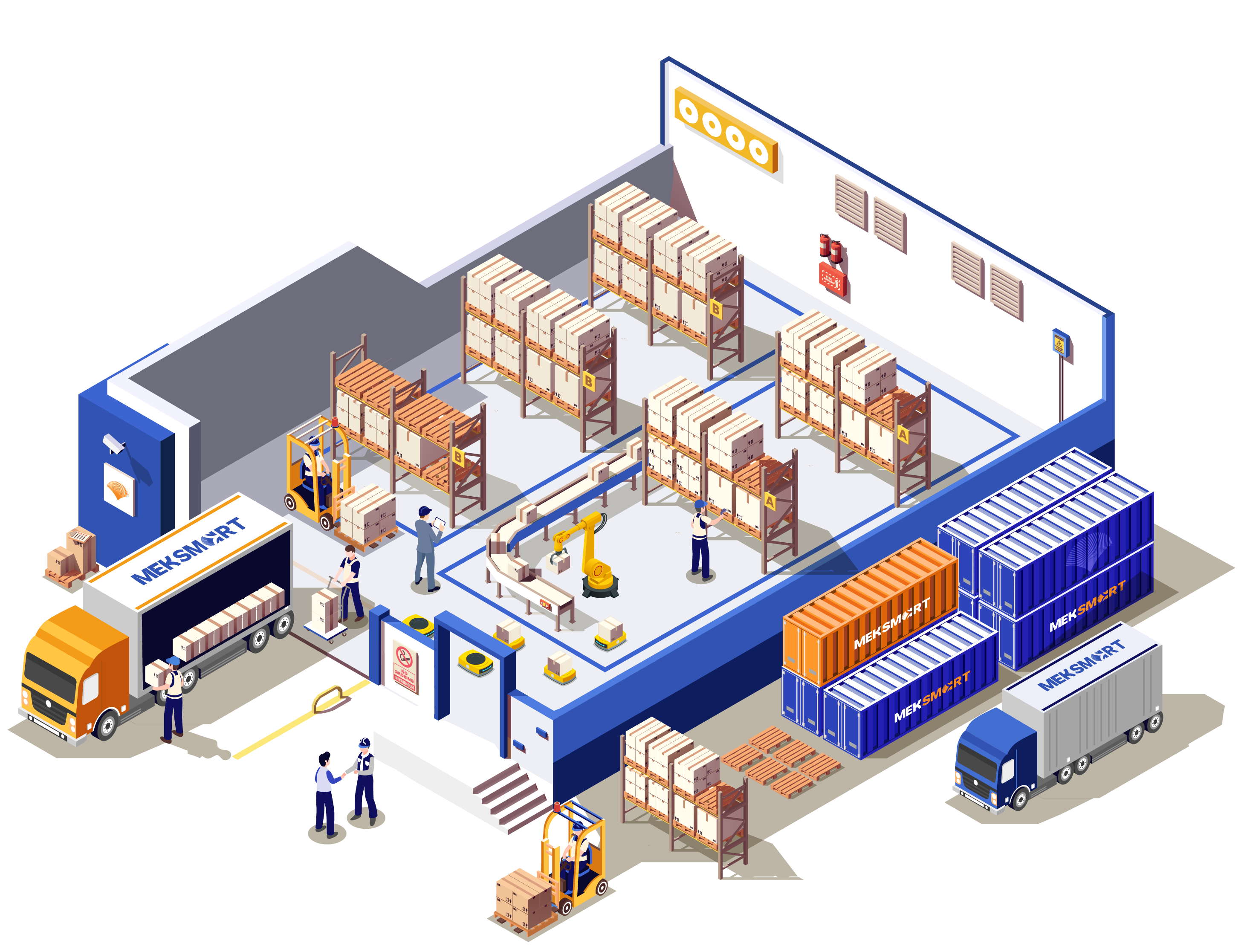MEKSMART
GENERAL NEWS
Author:
Update: 30/11/2022
6 CROSS-BORDER LOGISTICS TRENDS IN 2022
Digitization and regionalization of supply chains and development of green logistics... are cross-border logistics trends in 2022, according to Global Trade.
Global supply chains and logistics operations face many challenges due to the pandemic. Here are some trends in cross-border logistics activities in 2022.

1. Digitize data across the entire supply chain
The pandemic has spurred logistics businesses to adopt digital platforms that automate workflows by integrating and displaying data throughout the supply chain.
According to Alloy Technologies, 92% of executives say supply chain visibility is important to success. However, only 27% have found a way to get there. Instead of using discrete software to manage each stage, businesses can switch to a digitized platform and integrate data across the entire supply chain. This makes the operation smooth and increases the competitiveness of the business. Blockchain technology can be used to integrate all supply chain components on one platform to provide more transparency in the process.
2. Change the partner selection strategy
After the pandemic, companies in the cross-border logistics sector decided to cooperate based on the resilience and adaptability of businesses. Digitizing logistics operations makes an information exchange and data visibility more efficient. Companies tend to choose partners more carefully based on business insights and technology background.
3. Regionalization of the supply chain
Many companies are affected by supply chain disruptions due to Covid-19. Therefore, a trend in cross-border logistics activities in 2022 is to find businesses closer to save costs and limit the impact of the epidemic.
McKinsey's report on the impact of Covid-19 on global economic sentiment points to instability and inflation as the biggest threats to corporate growth and the economy. According to Mr. Anaid Chacón, Director of Nuvocargo, companies have understood the importance of fast and resilient adaptation to thrive in volatile conditions. Some of the activities that enterprises can perform are core business restructuring, technology deployment, and partner regionalization.
4. Apply technology to solve the shortage of drivers
According to the American Transportation Association (ATA), to keep up with today's economic needs, more than one million truck drivers are needed to join this industry. The US Department of Transportation's 2019 report estimates that 28% of heavy truck drivers will be over 65 years old in the next 10 years. That means transport companies need to have many policies to attract young workers and women because the current average age of drivers in the US is 48 years old.
Besides, solutions based on process automation or self-service system with customers help to solve the labor shortage. Self-driving truck solutions are becoming more popular as major transport routes begin to be tested for efficiency and cost.
5. Financial solutions for the supply chain
Regularly offering alternative solutions helps to increase capacity and maintain supply chain operations, thereby improving cash flow and investment activities. Improving products to mobilize investment and financing sources is the solution to fluctuating cash flows and meeting spikes in demand.
6. Greener Supply Chain
Transport companies are making efforts to improve the environment by minimizing the impact of logistics activities. Some of the solutions implemented include the application of environmentally friendly warehouses based on advanced energy management systems, intelligent supply chain planning, etc. In the future, initiatives to help reduce the impact on the environment in logistics activities will continue to be developed and improved.
Source: vnexpress.net







